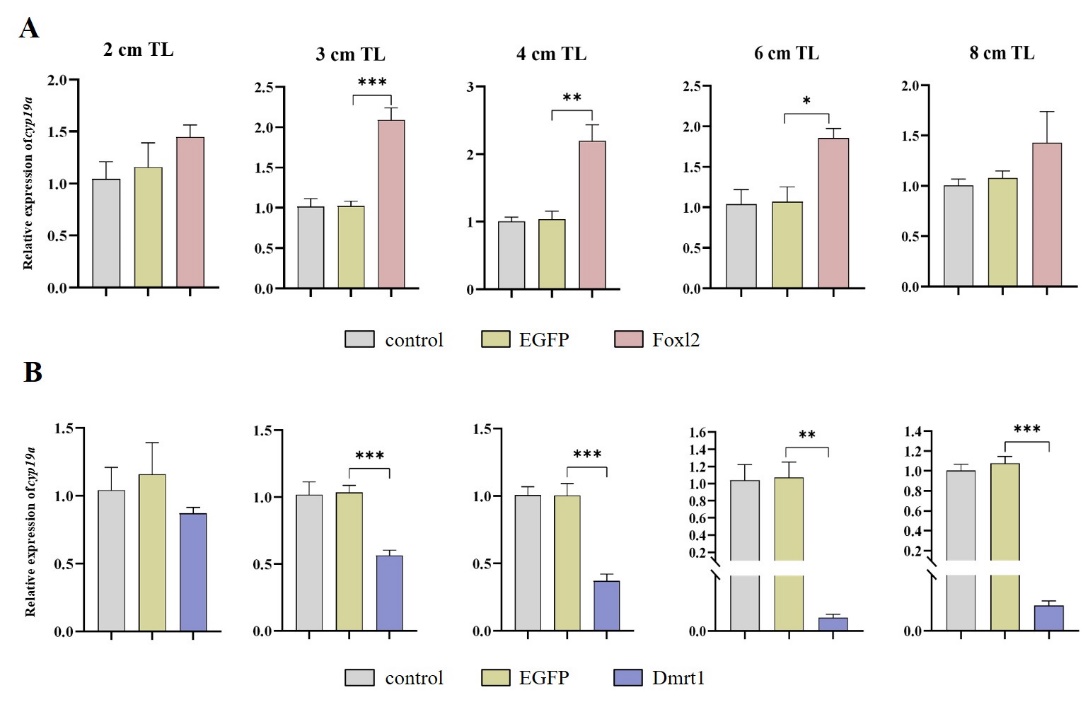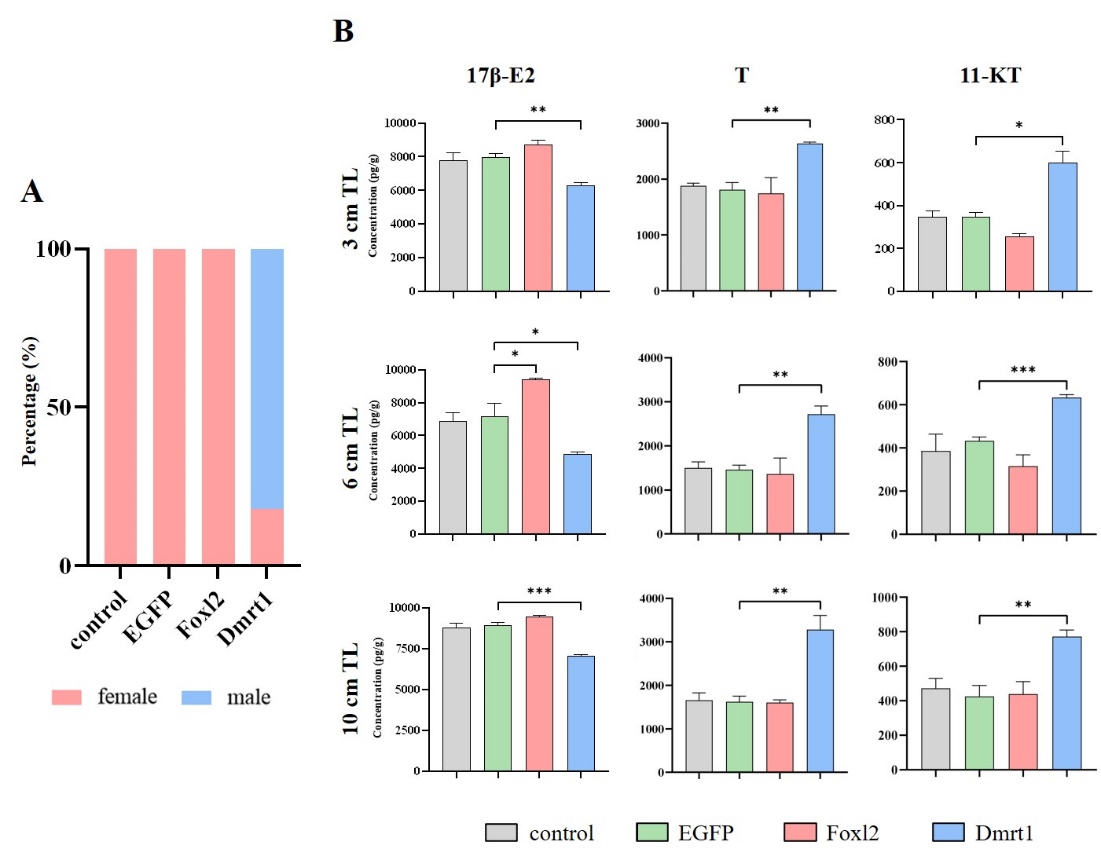Study on fish sex differentiation is important both from academic and practical aspects, as sexual dimorphism is widespread in fish species. Forkhead transcription factor 2 (Foxl2) and doublesex and mab-3-related transcription factor 1 (Dmrt1) have been proved to be the key factors in fish gonadal differentiation.
Foxl2 is one of the earliest discovered ovarian differentiation markers in fish, while Dmrt1 can activate testis-specific genes and inhibit ovarian-specific genes. Due to scant information is available on their function at protein level, there is still no direct evidence that has been provided to elucidate the biological functions of the Foxl2 and Dmrt1 proteins on sex differentiation in fish.
Recently, the research team led by Prof. YOU Feng from the Institute of Oceanology of the Chinese Academy of Sciences (IOCAS) obtained the bioactive recombinant Foxl2 and Dmrt1 proteins of the olive flounder Paralichthys olivaceus, an important maricultured fish, and found that the recombinant Dmrt1 could alter the sex phenotype and sex ratio.
The study was published in International Journal of Biological Macromolecules on Jun 16.
Researchers used the recombinant Foxl2 and Dmrt1 proteins to investigate their functions in the gonadal differentiation with intraperitoneal injection. The recombinant proteins could respectively up-regulate and down-regulate the expression of cyp19a (cytochrome P450, family 19, subfamily A), encoding aromatase cytochrome P450 (P450arom) that is the rate limiting enzyme of converting androgen to estrogen, as well as expression of the other transcription factors of cyp19a and hypothalamic-pituitary-gonadal (HPG) axis related genes. Furthermore, the recombinant Foxl2 and Dmrt1 proteins also changed the level of sex hormones. And the male rate in the Dmrt1 group increased from 0% to 82%, which is the first report in fish.
The recombinant Foxl2 significantly up-regulated cyp19a transcription level at the initial period of the ovarian differentiation, and then cyp19a transcription at high level was detected during the subsequent period of the gonadal differentiation, which could strongly support the hypothesis that the up-regulation of cyp19a by Foxl2 protein is needed not only for triggering but also for maintaining ovarian differentiation. Cyp19a transcription level was significantly decreased in the recombinant Dmrt1 group, and maintained at a low level during the testicular differentiation. In addition, the testosterone (T) and 11-ketotestosterone (11-KT) levels increased significantly.
"We speculate that the recombinant proteins caused change of cyp19a, which in turn affected the levels of sex hormones, and then affected the transcription levels of its corresponding receptors. In the Dmrt1 group, the decreasing transcription level of cyp19a and the increasing T and 11-KT levels promoted the formation of the male sex phenotype," said SHU Chang, first author of the study.
"These results could explain function of Foxl2 and Dmrt1 proteins in the flounder gonadal differentiation and reveal that Foxl2 and Dmrt1 are vital regulators for fish gonadal differentiation by regulating cyp19a expression, and also provide new biological insights and approaches for monosex production in aquaculture," said Prof. YOU.
The study was supported by the National Key Research and Development Program of China, the National Natural Science Foundation of China, the Youth Research Fund of Marine Biology and Biotechnology Laboratory, Pilot National Laboratory for Marine Science and Technology (Qingdao), the Key Research and Development Program of Shandong Province, and the National Marine Genetic Resource Center.

Fig. 1 Changes of cyp19a transcription level after intraperitoneal injection with the recombinant proteins (n = 4). (A) Foxl2 group. (B) Dmrt1group. The star represents significant difference between groups. * p < 0.05, ** p < 0.01, *** p < 0.001.

Fig. 2 Sex ratio and sex hormone level of each group after intraperitoneal injection with the recombinant proteins. (A) Sex ratio. (B) Sex hormone level. The star represents significant difference between groups. * p < 0.05, ** p < 0.01, *** p < 0.001.
Chang Shu, Lijuan Wang *, Congcong Zou, Xungang Tan, Yuxia Zou, Lingming Kong, Zhihao Wu, Qiaowan Wu, Ling Wang, Guoyu Wang, Ze Li, Feng You *. (2022). Function of Foxl2 and Dmrt1 proteins during gonadal differentiation in the olive flounder Paralichthys olivaceus. International Journal of Biological Macromolecules, 215: 141-154.
(Text by SHU Chang, WANG Lijuan)
Media Contact:
ZHANG Yiyi
Institute of Oceanology
E-mail: zhangyiyi@qdio.ac.cn
(Editor: ZHANG Yiyi)

